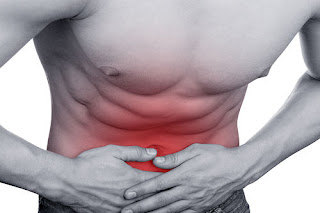A Lesson In Digestion - Part 1
I'm going to preface this by saying that all situations when it comes to a clients digestive concerns are highly individual and should be treated as such. The GI tract is extremely complex, with many facets that can be affected (or altered) due to a variety of different external or internal factors.
When we think of digestive issues; the immediate go-to remedy often preached is an increased intake of dietary fibre and probiotics. To very briefly summarise these two; he role of fibre (inclusive soluble and insoluble) is to absorb water in the GI tract to allow nutrients to pass through efficiently and excrete any waste matter. Probiotics are live strains of bacteria found in the stomach which can to aid in digestive health, however the exact process is currently unknown. It's theorised that larger amounts of probiotics helps to balance out the "bad bacteria" in the stomach which may cause GI disorders such as IBS.
What is known however is that it does not matter how many billion probiotics you consume. What's important is the percentage of bacteria that make it in to the colon. A large majority of probiotics on the market will NOT make it to the colon and thus will provide no extra benefit to digestion if the discomfort is not caused by an offsets balance of good and bad bacteria.
In relation to fibre; the first thing many people think of is increasing their intake of fruits, vegetables, Metamucil, oats etc. These all contain forms of soluble fibre - which are not fermented. The digestive system has a difficult time breaking down many fibrous carbohydrates. They bypass digestion in the small intestine and reach the colon undigested; where they then need to go through a process of fermentation to be broken down. Fermentation releases gas, which is a primary cause of bloating. For this reason, you need to consume fermented PREBIOTIC foods as opposed to increasing consumption of probiotics. Cabbage, inulin and FOS (fructooligosaccharides) are excellent forms of prebiotics which help to fuel the already existing probiotics in the colon and stomach, reducing the need for the colon to undergo a larger degree of fermentation of food.
On the contrary - sometimes rather than relying on which foods to consume or supplements to take to aid in digestion; we need to look at what things should be avoided and why. For this reason, it's important to understand the structure of the intestines and how the digestive process works to help determine what may be causing digestive disruption. Villi, the singular of which is villus, are finger-like projections in the small intestine that help absorb food more efficiently in the body. Food entering into the body is liquefied and partially digested in the stomach. It then passes into the small intestine.
The villi are the parts of the GI tract that are responsible for absorbing nutrients from food and passing them into the bloodstream. Villi are also covered with microvilli. The purpose of both structures is to increase the small intestine’s surface area so that nutrient absorption is enhanced. Villi increase the surface area where substances are able to be absorbed in the small intestine 30-fold while microvilli increase it 60-fold. This increases the efficiency of nutrient absorption. Each villus is also coated in enzymes that aid digestion.
Amino acids and nutrients found in food are absorbed by villus capillaries via a process called diffusion. Diffusion refers to the moving of substances moving from high concentration to low concentration until the two concentrations are equal. Therefore, if there are more nutrients such as essential amino acids in the small intestine than in the blood stream, the nutrients will move from the small intestine through the villi and into the blood stream. This is how your body is able to gather the nutrients from your food. These structures are also able to trap larger pieces of food and hold onto them until they can be digested by the enzymes coating them. So with that said; the longer the villi the more efficient the digestive process will be.
Ever consumed a heap of diet coke or too much sugar-free gum and found yourself looking 30 weeks pregnant? Aside from the possible inflammatory response that may occur, over-consumption of artificial sweeteners can lead to shortening of the villi, which as we now know - will have a direct negative impact on how the body breaks down and absorbs nutrients. Another thing to be mindful of is the consumption of corn-derived carbohydrate powders such as waxy maize or Vitargo. These too can cause shortening of the villi; which is why many people feel abdominal discomfort or distension during or after drinking and intra-workout carbohydrate or carb replacement powder. An alternative form of carbohydrates in which I recommend are highly branched cyclic dextrins (HBCD). Cyclic dextrins have a low molecular weight and high osmolality, which allows them to diffuse through the small intestine to the blood stream at a much faster rate, without pulling larger amounts of blood to the small intestine causing inflammation.
In part 2 I will discuss the inflammatory response to food, how and why it occurs, what affects inflammation has on the digestive system and which foods are more likely to cause inflammation than others. Stay tuned!



Comments
Post a Comment